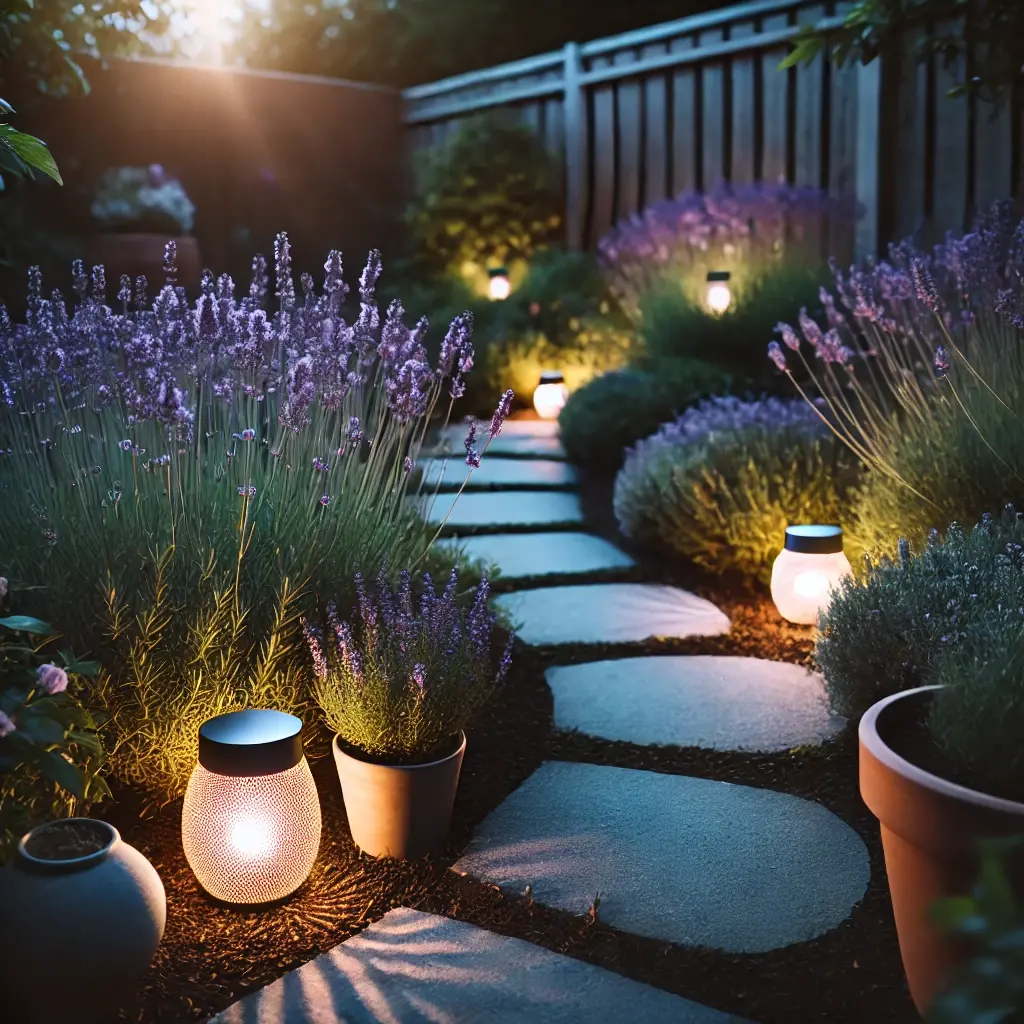Gardening is an activity that offers numerous health benefits for the elderly, providing light physical exercise and mental well-being. However, seniors with low vision might face certain challenges while gardening. To help them enjoy this activity safely and comfortably, this article shares useful gardening tips and recommendations for plants suitable for those with low vision.
Health Benefits of Gardening
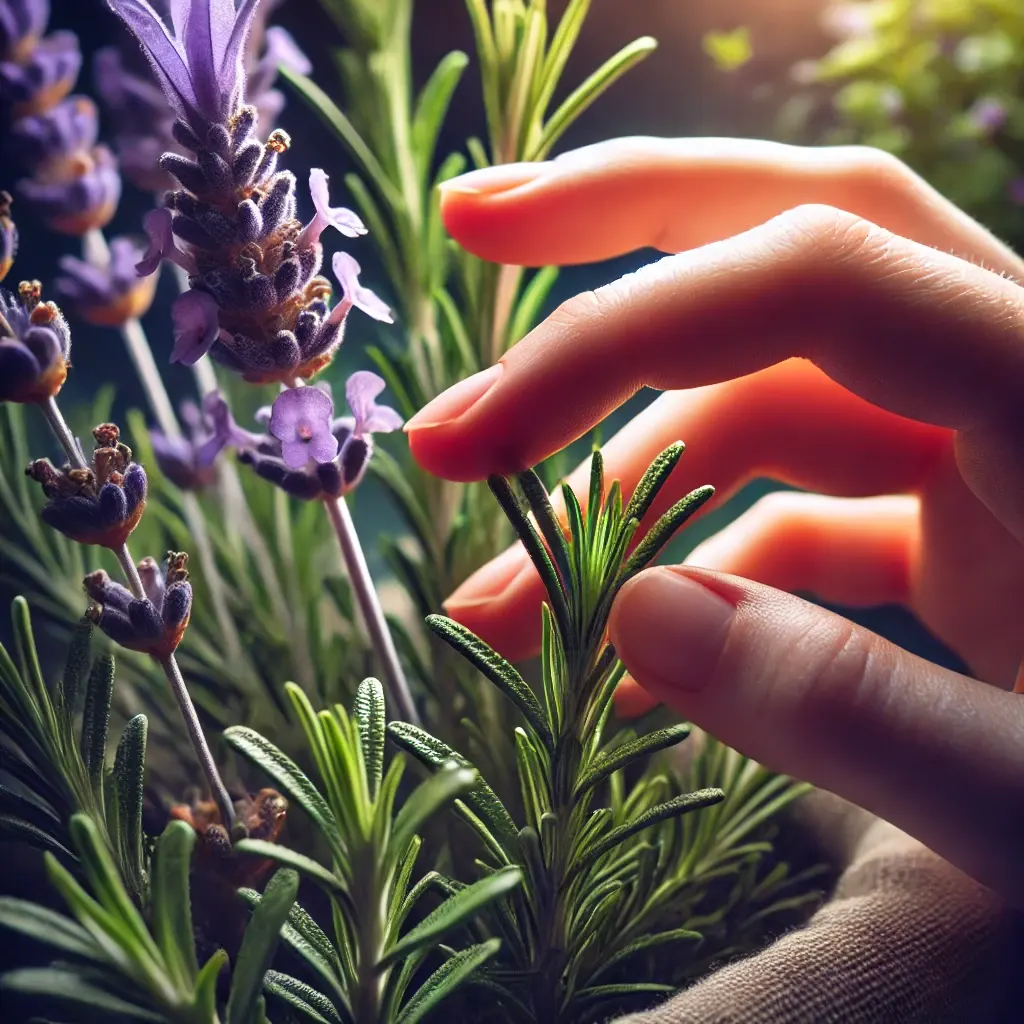 Research indicates that gardening can effectively increase physical activity levels, improve mood, and reduce stress for elderly individuals【Smith & Jones, 2021】. For those with low vision, engaging with plants through touch and smell can help maintain a positive outlook on life and increase social interaction, leading to a happier and more active lifestyle.
Research indicates that gardening can effectively increase physical activity levels, improve mood, and reduce stress for elderly individuals【Smith & Jones, 2021】. For those with low vision, engaging with plants through touch and smell can help maintain a positive outlook on life and increase social interaction, leading to a happier and more active lifestyle.
Gardening Tips for Elderly Individuals with Low Vision
Space Planning
- Ensure that the gardening space has clear and accessible paths. Install distinct path markers to help individuals with low vision easily identify different sections of the garden.
- Use contrasting colors to mark garden bed edges, such as dark-colored stones, to help differentiate areas.
- Raised beds can reduce the need for bending and make it easier to manage plants.
Choose User-Friendly Gardening Tools
- Select tools that are ergonomically designed with comfortable grips. Opt for brightly colored or high-contrast tools that are easier to locate during gardening activities.
- Automated systems, like self-watering devices, can reduce the need for manual labor and minimize the risk of accidents.
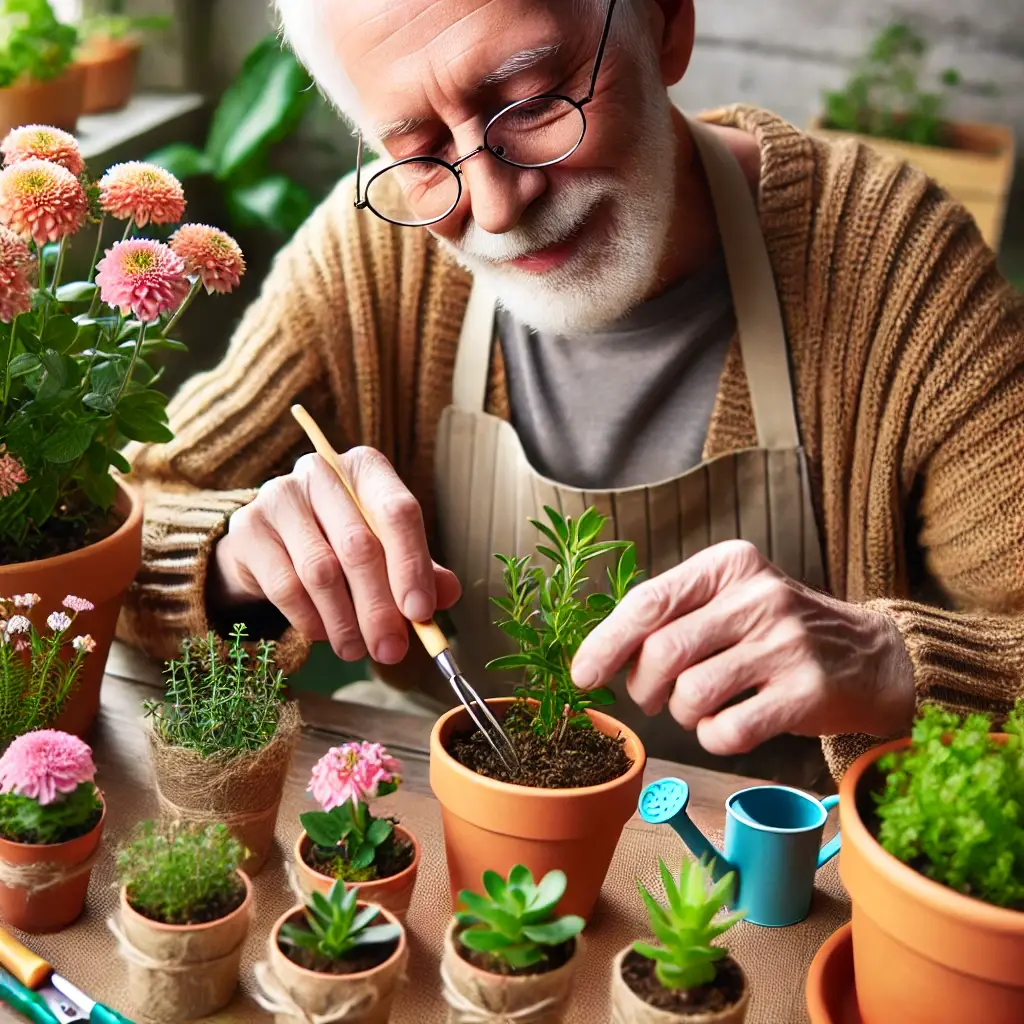
Enhancing the Sensory Experience
- Planting species with different textures and scents can allow elderly individuals to enjoy gardening through their senses. For example, herbs like rosemary and lavender have distinctive aromas that are easy to identify【Johnson & Green, 2020】.
- Bright-colored plants can also help capture attention, making it easier for those with limited vision to notice and appreciate the garden’s beauty.
- Planting herbs with soothing fragrances (like mint or lemongrass) and choosing plants that attract birds and bees can create a richer sensory experience. Gardening thus becomes not just physical exercise but also a therapeutic activity that helps ease anxiety and uplift moods.
Proper Lighting and Contrast Design
- Adequate lighting can improve the visual perception of plants for individuals with low vision. Consider adding sufficient light sources around the gardening area.
- Use low-brightness LED lights for nighttime gardening to ensure that seniors can clearly see their surroundings and plants, even with limited vision.
Smart Devices and Technological Aids
- With advancements in technology, there are many smart devices that can assist elderly individuals with low vision in gardening. For instance, devices with voice-activated watering timers, automatic irrigation systems, and gardening apps with voice recognition can simplify tasks. Integrating these modern elements makes gardening more convenient and reduces the challenges brought on by vision limitations.
Learning Detailed Plant Care Techniques
- To help elderly individuals with low vision better manage their gardens, it is useful to provide detailed care techniques for each recommended plant. For example, they can learn how to prune properly to promote healthy growth, how to effectively control pests, and how to propagate new plants. These specific care guidelines not only give them a sense of accomplishment in gardening but also help them better understand and nurture their plants.
- To easily access this detailed care information, elderly individuals with low vision can use Zoomax devices. These devices are designed specifically for low-vision users, offering features like text magnification and enhanced contrast, making it easier to read gardening guides. This allows them to independently read articles, books, or online resources about plant care, enabling them to learn more about gardening without being limited by their vision and giving them the confidence to tend to their gardens.
Recommended Plants for Elderly Individuals with Low Vision
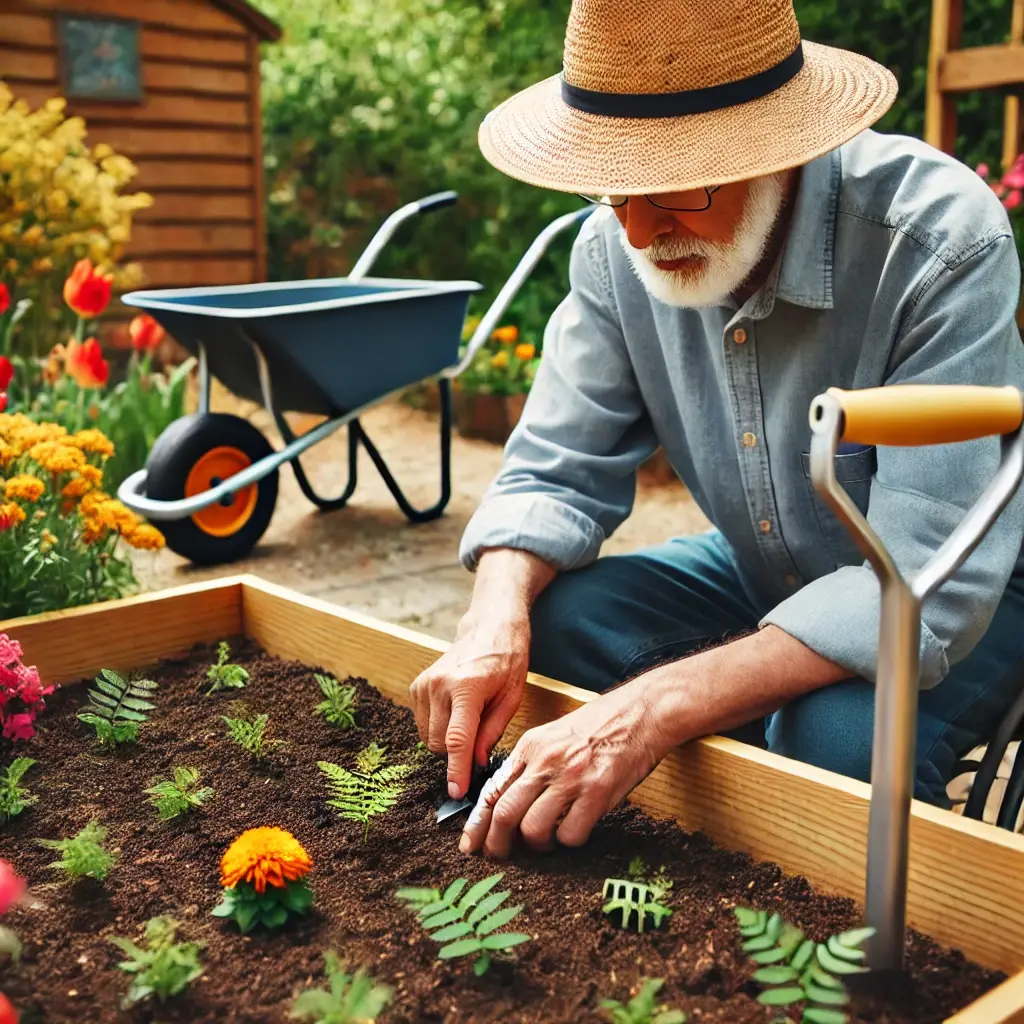
Rosemary (Rosmarinus officinalis)
Rosemary is a hardy and easy-to-manage plant with a strong fragrance and distinct texture. It is ideal for identification through smell and touch, making it suitable for individuals with low vision【Brown, 2022】.
Marigold (Tagetes spp.)
Marigolds have bright, vivid colors, especially yellow and orange, that are visually striking and easy for seniors with low vision to notice. They grow quickly, adapt well, and are perfect for beginners.
Lavender (Lavandula spp.)
Lavender’s soft leaves and unique aroma make it easy to identify by touch and smell. It is a low-maintenance plant that can be enjoyed even by those with limited vision.
Aloe Vera (Aloe vera)
Aloe vera is simple to care for and has thick, textured leaves that are easy to feel and identify. Additionally, it helps maintain indoor humidity, which is beneficial during dry seasons.
Key Safety Tips for Gardening
Establish Safe Walking Paths
Install handrails and guardrails to help elderly individuals maintain balance, especially when tending to plants or navigating the garden.
Avoid Slippery or Wet Surfaces
Choose anti-slip mats for walkways, and avoid smooth surfaces to ensure safety, even in wet conditions.
Regular Maintenance of Gardening Tools
Regularly check and clean gardening tools to ensure they are in good condition. Sharp and well-maintained tools help in smooth operation and reduce the risk of injury.
Conclusion
Gardening is an activity suitable for all ages, including seniors with low vision. By selecting appropriate plants and making adjustments to the gardening environment, elderly individuals can safely and joyfully experience the benefits of planting. Paying attention to safety and using tools adapted for their needs can ensure that they feel comfortable and confident while engaging in gardening.
FAQ
Can elderly individuals with low vision garden safely?
Yes, elderly individuals with low vision can garden safely with the right precautions. Clear pathways, anti-slip mats, handrails, and high-contrast tools can make the gardening environment safer and more accessible.
What plants are best for elderly individuals with low vision?
Suitable plants include rosemary, marigolds, lavender, and aloe vera. These plants are easy to care for, have distinct textures or scents, and come in bright colors, making them ideal for individuals with low vision.
How can I assist an elderly person with low vision in gardening?
You can help by organizing the garden layout, choosing easy-to-use tools, and ensuring there is good lighting. Family members can also participate, making the gardening experience safer and more enjoyable for seniors. Additionally, consider purchasing smart devices, such as voice-activated watering timers or automatic irrigation systems, to simplify tasks. Low-vision aids, like magnifiers or Zoomax devices, can also help them read gardening guides and observe plants more clearly, enhancing their ability to learn about and care for their plants.
What are the health benefits of gardening for elderly individuals with low vision?
Gardening provides light physical exercise that helps maintain muscle strength and flexibility. It also brings a sense of accomplishment, reduces stress and anxiety, and enhances mental well-being【Smith & Jones, 2021】.
How do I choose gardening tools for elderly individuals with low vision?
Choose tools with bright colors and high contrast for easy identification. Ergonomically designed tools with comfortable grips reduce hand fatigue, and Devices like voice-activated watering timers, automatic irrigation systems, and gardening apps with voice features can make gardening easier.
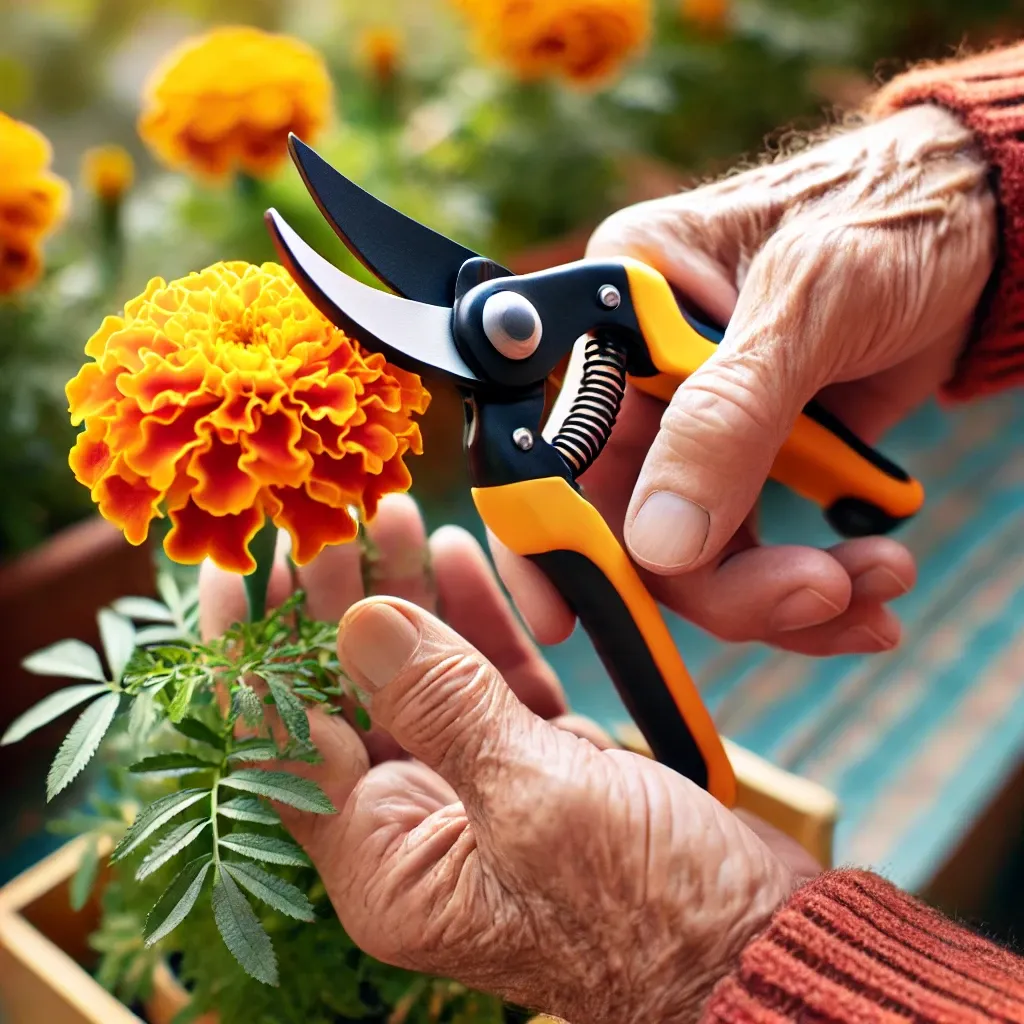
References
- Brown, R. (2022). The therapeutic benefits of gardening for seniors. Journal of Elderly Health, 28(4), 123-130.
- Johnson, P., & Green, S. (2020). Gardening with sensory impairments: Adapting techniques for success. Horticultural Therapy Today, 15(3), 45-60.
- Smith, A., & Jones, T. (2021). The mental health benefits of gardening for older adults. International Journal of Geriatric Psychiatry, 35(6), 452-461.

